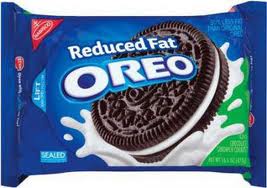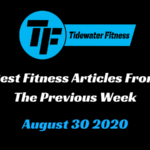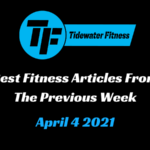There are a lot of myths surrounding the fitness and nutrition industries these days. With all the information available on the internet and all the “studies” coming out, its no easy task sifting through it all to determine what’s right and what’s wrong.
Unfortunately many truths, as claimed by the media and biased researchers, are wrong. This is a shame because the public buy into it. How can they not? They’re hearing it from a “credible” source, so it must be right.
This isn’t always the case, and many times the results of a study are completely misinterpreted to make it say what the researchers wanted it to. Today, I want to talk about five myths that have been labeled as fact in our society.
Read on and see if you have heard any of these before.
1) Cardio is best for fat loss.
I can’t tell you the number of times I have heard this. Many believe that all they need to do is cardio and their fat will melt away.
Research has not shown this though. One study done compared the fat lost between two groups. One group performed high intensity intervals for 15 weeks while the other did steady state exercise (cardio) for 20 weeks (1).
The cardio group burned more calories than the interval group by the end of the study. The incredible thing was, the interval group lost a greater amount of fat.
Another study looked at the same two variables (2). They had a group of women divided into two groups, an interval group and a steady state group.
The interval group performed intervals 3 times per week for 20 mins for a total of 15 weeks. The steady state group performed 40 minutes of cardio 3 times per week for 15 weeks. The results again showed that the interval group lost more body fat.
So why is this the case? Well, there are two big things that differ between these two forms of exercise. The first is that intervals are superior to cardio for raising growth hormone and testosterone. These two hormones are key to building muscle and burning fat.
The second is that intervals increase the amount of oxygen taken in after exercise (called Excess Post-Exercise Oxygen Consumption) to return the body back to its pre-exercise state. This could take hours, which means you will still be burning calories long after the exercise is complete. The same cannot be said regarding cardio.
I’m not saying that cardio is awful. You just need to decide what your ultimate goal is. If it’s fat loss, then stick to intervals. You’ll get more bang for your buck.
2) Breakfast is the most important meal of the day.
How many have heard someone say if you don’t eat breakfast you’ll gain weight? This is a big debate within the fitness community. The truth is there isn’t much evidence to support it.
Last year, a meta-analysis was done on 92 published articles regarding obesity and breakfast (3). If you’re unfamiliar with a meta-analysis, it’s where the researchers analyze how other studies were performed to determine their validity.
These particular researchers found that, among the 92 studies, there was no evidence that supported skipping breakfast caused obesity. Now that’s pretty significant, don’t you think?
This is one area where it depends. Experiment with breakfast to see what works best for you. You may find that you feel and look better if you don’t eat breakfast. You may find the opposite.
Whatever you decide, base it on your own results.
3) Low fat foods are a great option when trying to lose weight.
This whole fad started in the 1970s (4). There were a few studies that came out linking fat intake with cancer and heart disease. As a result, everyone including the government starting recommending a low-fat diet.
Soon after, low-fat foods were being made by food corporations and now you can find pretty much anything you want with either low or reduced fat on the label. Want some cookies? No problem get the reduced fat ones.
There are two big problems with this myth. The first is that fat makes food taste great. So if it’s removed it must be replaced with something else to make the food palatable. Can you guess what it is?
Sugar! Yep, that’s what makes those reduced fat cookies taste so delicious.
The second problem is that we have created this culture where we believe if a food is low in fat it is good for us. We’ve been told to believe fat is bad. This in turn forces people to turn to these low fat, processed foods because they believe they are the best option.
In reality, fat is good and we need it in our diet. Not the kind in processed junk, but in things like nuts, avocado, coconut oil, and olive oil. Some benefits of including good fat in your diet are lowering cholesterol and reducing inflammation, two things that are extremely important in disease prevention.
So next time you see that low fat food, take a pass. Opt for real foods like I mentioned above and you will be good to go.
4) Red meat causes heart disease.
This one is huge. You can find stories all over the internet linking red meat and heart disease like this one.
However it’s always important to note what type of meat the researchers studied. In almost all of these studies it links processed meat and red meat to higher risks of heart disease.
We all know that processed food is garbage anyway. Don’t you think if someone continually consumed processed meat year after year it could lead to damaging effects on the body? Absolutely!
Another thing that’s important to remember is that there is a great difference between grain fed beef and grass fed beef. Cows that are given a grain based diet are also loaded with unnatural chemicals and hormones to make them grow faster.
These types of things are not found in grass fed cows who lead a natural life. There is a distinct difference in the quality of these meats.
In 2010, a team of researchers conducted a meta-analysis on 21 different studies that associated red meat with heart disease (5). They ultimately discovered that there was no connection between the two.
Another study done in 2010, by the same researchers, found that heart disease risk increases when saturated fat is replaced with refined carbohydrates (6). And what is most of our food made of nowadays? Refined carbohydrates!
You see meat isn’t the culprit here, refined carbohydrates are. They increase triglycerides, increase LDL (bad) cholesterol, and decrease HDL (good) cholesterol (6). And this is the stuff our government is recommending we eat.
Always look for grass-fed meat when available. It’s loaded with protein and good fat.
5) Lifting weights is bad for your body and joints.
I had a conversation with someone last week who told me that he doesn’t lift weights because it’s bad for his joints. He also told me that he is planning on running a marathon in a couple months.
There are a lot of people who stick to basic forms of cardio because they believe strength training is bad. In reality, neither are bad. We were designed to run and designed to lift weights.
However, when someone tells me this I think its an interesting comparison. Research has shown that the forces absorbed by the body increase by as much as 550% of your own bodyweight when running (7). This is why you hear a lot of people say they can’t run because it hurts their knees.
It’s no wonder why. Again, I’m not saying running is bad, because your body can adapt to this stress by strengthening tissues and cartilage as you do it more. The great thing is lifting weights can also do this without the same impact forces.
By exposing the body to more weight, it strengthens bones, muscles, tendons, ligaments, and cartilage. This increases the ability of the body to handle higher levels of stress like the impact felt by the knees when running.
Resistance training isn’t bad, quite the opposite. It is a great way to strengthen the body and prepare it for more strenuous training.
CONCLUSION
These myths are just the tip of the iceberg. The fitness and nutrition industries are notorious for providing bad information.
One of the worst things about believing any of the above is that is keeps you from achieving your goals. I don’t want to see that happen.
I hope this information helps you on your health and fitness journey.
If you are looking for a personal trainer in Savannah, contact me to set up a consultation.
And if you found any of this information helpful, or know of someone it could help please share with others!
References:
1) Tremblay, A. et al. “Impact of exercise intensity on body fatness and skeletal muscle metabolism,” Metabolis. 1994; 43(7): 814–818.
2) Trapp, E.G. et al, “The effects of high-intensity intermittent exercise training on fat loss and fasting insulin levels of young women,” Int J Obesity. 2008; 32(4): 684–691.
3) Brown A.W. et al, Belief beyond the evidence: using the proposed effect of breakfast on obesity to show 2 practices that distort scientific evidence. Am J Clin Nutr. 2013; 98(5): 1298-308.
4) http://www.medicalnewstoday.com/articles/96459.php
5) Siri-Tarino, P. W. et al, Meta-analysis of prospective cohort studies evaluating the association of saturated fat with cardiovascular disease. Am J Clin Nutr. 2010.
6) Siri-Tarino, P. W. et al, Saturated fat, carbohydrate, and heart disease. Am J Clin Nutr. Mar 2010; 91(3): 502–509.
7) http://www.kneeclinic.info/knee_sports_injuries_running.php






